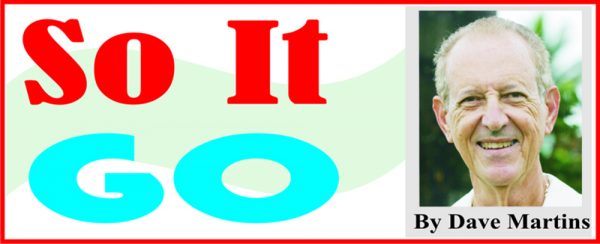
I was born and raised in West Demerara, partly at Hague then Vreed-en-Hoop, but like so many Caribbean people I migrated, as young man, to Toronto, where I lived for some 20 years, then migrated again to the Cayman Islands, where I lived for 25 years, and migrated again 10 years ago returning to Guyana to live.
In the years I was away, I had returned home frequently on Tradewinds trips, or sometimes just visits, so I was coming back to what I knew and what knew me, but I was essentially, once again, migrating. Furthermore my story is not unusual. Many of my contemporaries, both here and across the Caribbean, have lived a similar scenario. The condition, however, is so widespread, so common, that we often don’t notice it; it is part of the fabric. On trips to the region, over the years, I would be interacting with people from various parts of the world now making their home in our various territories – Trinidad, Barbados, Antigua, St. Lucia, Cayman, etc. – and before too long those people from those various countries become completely absorbed in their new locations and become a part of the fabric in such depth that they are now Trinidadian or Bajan, etc. When I lived in Cayman, the mechanic who repaired my car was a Jamaican; the man whose pastry shop I patronized was from England, and the guy who filled in on bass for me when our regular bass player was not available, was from Barbados.
In general, we have come to see this combination as simply part of life in the region; we don’t talk about it, we don’t even mention it as anything odd or unusual, and I suspect a big part of the acceptance is that, in fact, these immigrants are among us because they are obviously filling a need, they are contributors to the mix, and the recent wave of immigrant Chinese operating or employed in various stores in Guyana is an example of that; they become part of the landscape, even as they struggle with English and we make jokes about it. It is a sociological tangle that I have seen popping up in various PhD dissertations, and I see it as a tribute to Caribbean people’s forbearance that we deal with it seamlessly; if there is any backlash to it, it is truly minor, a passing comment and no more, but as someone observing culture in both my music and my day-to-day life, I am engrossed by it, particularly in our acceptance of these immigrants. Perhaps our own experience at migration to North America, Europe, Australia, etc., has left us with that disposition as we see these outsiders, quietly but effectively, folding into our culture, and over time becoming very much a part of the fabric.
Just recently, as a result of my long interest in fruit trees wherever I lived, I came into contact with a gardening expert I had contacted when the ackee tree I had planted in our yard, a prodigious producer of beautiful fruit, was suddenly shedding blossoms copiously. Recommended to me as someone who could help fix matters, was Hans Neher, who had a thriving farm off the Linden Highway, and had made a reputation around town with his successful planting of ornamental trees in various government locations. In short order, he diagnosed the problem (too much groundwater), recommended solutions, and also took on the very specialist work of grafting a local mango seedling with a branch from a Nam Doc Mai mango tree in our yard. (The Nam Doc is a Vietnamese variety that produces delicious mangoes with a very thin seed and very little string.)
Hans is an example of these immigrants one finds bringing their singular talents to our region and making life better in the process. He came here from Germany as part of that country’s involvement with a CDB agricultural support project here, during which then President Desmond Hoyte invited him to give a speech on agriculture for local farmers. Ultimately, Hans fell in love with Guyana – he was struck by the “freedom” he found here as opposed to the more regimented CDB work – and despite being a family man with four children he came here to live. Thirty years or so later, he is still here, now with a bustling farm off the Linden Highway, and a gardening operation on Sheriff Street, and the only giveaway to his nationality is his German-accented English. Guyana, and indeed the Caribbean, is full of other examples like him; people who came here, with different stories, but in each case found something here that appealed to them and stayed.
One of the striking things about this change-in-life shift is that the people engaged in it become strong ambassadors of their new environment and are consequently quickly accepted in it. Today, Hans’ expertise is coming into play in various landscape efforts around Georgetown as well as in his own farm up the highway where he lends a hand to other nearby farmers. Talking to Hans, however, one gets no intimation that he sees himself that way. He simply came here, recognized the opportunities and potential in his line of work, and he decided to put down roots. Most people here would refer to him as an agricultural expert, which he is, but for me he is a sterling example, right under our noses, of the phenomenon, operating in various ways and quietly changing the world – the immigrant.


